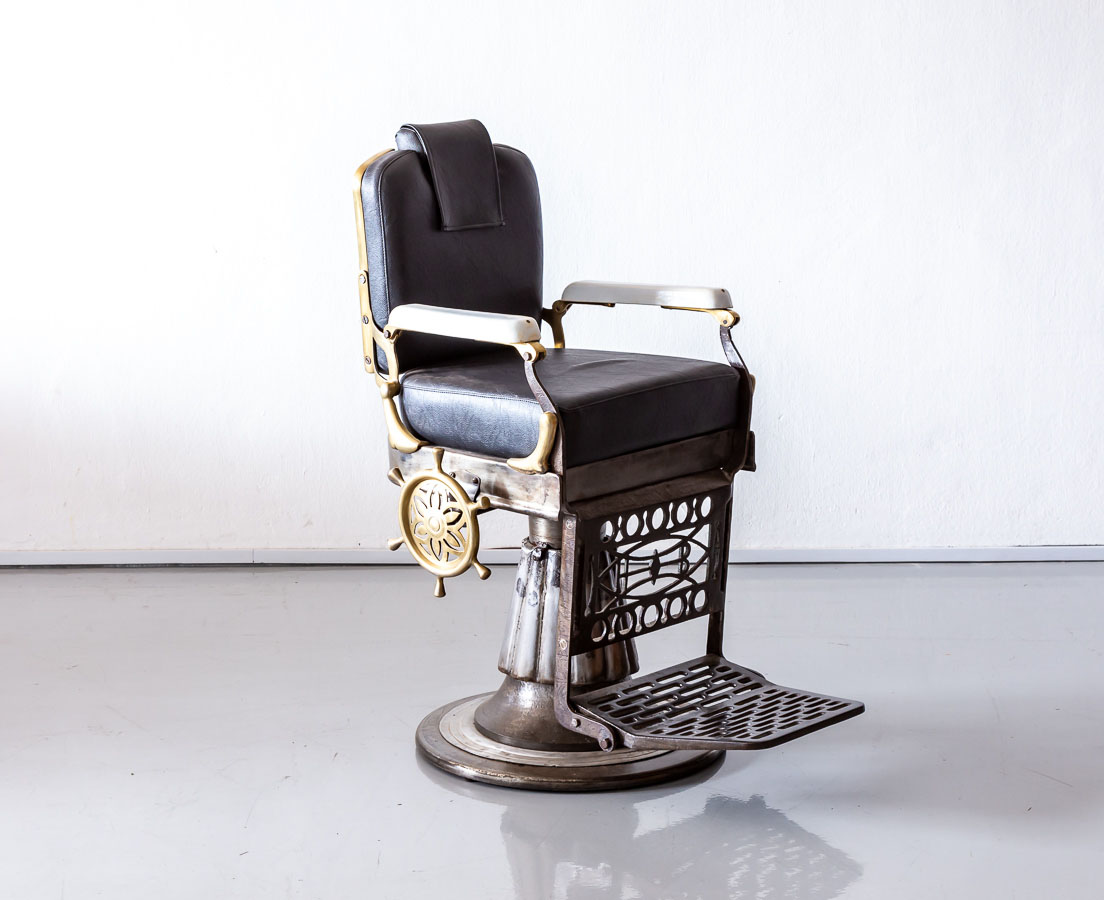History and Significance: Old Wooden Barber Chair

The old wooden barber chair, a fixture in countless barbershops for generations, embodies a rich history of craftsmanship, tradition, and societal evolution. From its humble beginnings as a simple stool to its iconic status as a symbol of both masculinity and community, the barber chair’s journey reflects the changing landscape of barbering and the broader cultural context it occupies.
Evolution of the Barber Chair
The evolution of the barber chair can be traced back to the early days of barbering, when barbers were responsible for a wide range of services beyond just haircuts. These early barbers often used simple stools or benches for their clients, which were later replaced by more elaborate chairs designed for comfort and practicality. The transition from simple stools to the iconic wooden designs was driven by several factors, including the increasing demand for more comfortable and efficient barbering practices. The development of hydraulic mechanisms in the late 19th century further revolutionized the barber chair, allowing for greater adjustability and ease of use.
Historical Significance of Wooden Barber Chairs
Wooden barber chairs hold immense historical significance, serving as tangible reminders of a bygone era when barbering was an integral part of community life. In the 19th century, barbershops were not only places for haircuts but also social hubs where men gathered to discuss news, politics, and local affairs. The wooden barber chair, with its sturdy construction and timeless design, became a symbol of this communal spirit, providing a comfortable and familiar setting for these interactions. The iconic wooden barber chair was also a testament to the craftsmanship and artistry of the era, showcasing the skills of skilled woodworkers and furniture makers.
Famous Barbers and Their Wooden Chairs
The cultural impact of wooden barber chairs is evident in the stories and anecdotes surrounding famous barbers and their use of these iconic chairs. For example, the legendary New York City barber, [Insert famous barber name], was renowned for his meticulous haircuts and his use of a vintage wooden barber chair, which he claimed had been passed down through generations of barbers in his family. This chair, with its worn leather upholstery and intricate carvings, became a symbol of his legacy and a testament to the enduring appeal of these classic designs.
Craftsmanship and Artistry
The creation of wooden barber chairs involved a high degree of craftsmanship and artistry, showcasing the skills and ingenuity of skilled woodworkers. These chairs were typically constructed from durable hardwoods such as oak, mahogany, or cherry, and were often adorned with intricate carvings, polished finishes, and hand-stitched leather upholstery. Notable makers of wooden barber chairs included [Insert maker name], whose chairs were known for their exceptional quality and timeless elegance. These makers often incorporated traditional techniques and materials, ensuring that each chair was a unique work of art.
Restoration and Preservation

Giving a tired old barber chair a new lease of life is a rewarding challenge. It’s a chance to breathe new life into a piece of history and bring back its former glory.
Restoring an Old Wooden Barber Chair
Restoring an old wooden barber chair requires patience, attention to detail, and a blend of traditional techniques and modern materials. Here’s a step-by-step guide to get you started:
- Cleaning: Begin by thoroughly cleaning the chair with a soft brush and a mild soap solution. Remove any dust, grime, or loose paint. Be careful not to use harsh chemicals that could damage the wood or finish.
- Inspection: Carefully inspect the chair for any signs of damage, such as cracks, loose joints, or missing pieces. Take note of any areas that need repair.
- Repair: Use wood filler to repair any cracks or holes. For loose joints, tighten screws or use wood glue to reinforce the connection. Replace any missing pieces with new ones that match the original style and wood type.
- Stripping: If the chair has multiple layers of paint or varnish, you may need to strip it down to bare wood. Use a chemical stripper, following the manufacturer’s instructions carefully. Be sure to wear protective gear, including gloves and a respirator.
- Sanding: Once the old finish is removed, sand the chair with progressively finer grades of sandpaper to smooth out any imperfections. Be sure to sand with the grain of the wood to avoid scratches.
- Finishing: Apply a new finish to the chair, such as a stain, varnish, or paint. Choose a finish that complements the chair’s original style and protects the wood. Apply multiple thin coats, allowing each coat to dry completely before applying the next.
- Reassembly: If the chair was disassembled for repair, reassemble it carefully, ensuring all parts are properly aligned and secured.
Challenges and Rewards of Preservation, Old wooden barber chair
Restoring an old wooden barber chair presents unique challenges. These chairs are often fragile and require careful handling. Finding matching wood and finishes can be difficult, and the restoration process itself can be time-consuming and demanding. However, the rewards are immense. Preserving these historical artifacts ensures that future generations can appreciate their craftsmanship and learn from the past.
Resources for Restoration
There are many resources available for those interested in restoring antique barber chairs. Reputable restoration specialists can provide expert guidance and assistance. Additionally, organizations dedicated to preserving antique furniture can offer valuable information and resources.
